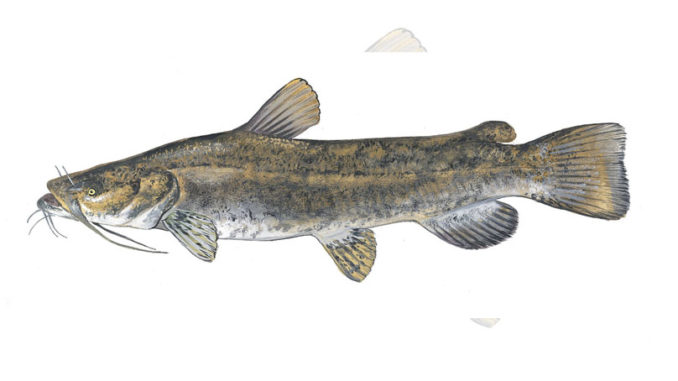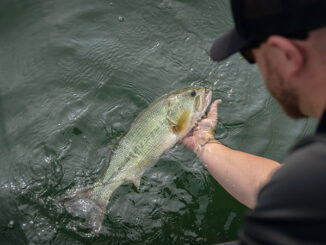
Flatheads are among the biggest catfish in America
The flathead catfish (Pylodictus olivaris) is one of the Big Three species of catfish that lurk the waters of many American waterways. Along with the Arkansas blue and the channel catfish, flatheads are highly prized among catfish anglers.
Flatheads grow quite large, rivaled only by the blue among the big three. True to its name, this fish has a very flat head. If you were to make an artificial flathead catfish using a pile of junk, the head of a shovel lying flat on the ground would make the perfect head. The mouth of these fish resemble the rear drop-down door of a large cargo plane.
The flathead is native to the Mississippi, Missouri, and Ohio river basins, but the species has been introduced to many areas of the United States. It is highly adaptable to a wide-range of waters, and can live in very harsh conditions of water quality.
Flathead catfish are highly skilled hunters. They begin their lives eating small crayfish, freshwater shrimp, and tiny fish. As they grow, their appetites get bigger, and their ability to eat larger prey does too. The bigger a flathead is, the bigger the prey it can eat. One of their favorite foods is sunfish such as bluegills, shellcrackers and redbreasts. But they also eat plenty of bass and other catfish.
When it comes to diet, flatheads are not picky at all. However, they do prefer live prey over already dead fish. Unlike other catfish species, flatheads will completely ignore decaying fish and will hold out for quite some time searching for live prey, even when plenty of dead fish are around.
Flatheads often get blamed for the downfall of other species
In states where flatheads have been introduced, fisheries biologists believe they have played a big role in eliminating some prominent native fish. White catfish, along with yellow and brown bullheads, which are smaller species of catfish, have virtually disappeared in almost every state that flatheads have been unnaturally stocked in. Redbreast sunfish have also seen huge decreases in their numbers, due in large part to the introduction of flatheads.
Flatheads spawn around hollowed-out logs, undercut banks, and any debris they can find. The males make nests that can range widely in depth. Females lay between 4000 and 10,000 eggs at a time. Males aerate the eggs with tail movements, and guard them from predators. Once the eggs hatch, the males continue guarding them until they have consumed their own yolk sacs. After that, the juvenile fish disperse.
Flatheads usually begin spawning at between the age of four and five-years-old. Their average life expectancy in the wild is about 20 years..
Flatheads are among the most solitary of fish, preferring to find a protected spot and hunker down, only mingling with others for the purpose of spawning. Anglers targeting flatheads look for sunken debris fields, the undercuts of banks, and partially-submerged timber.
Anglers recognize flatheads due to the fish’s olive color, non-forked tail, and flat head. It is very easily distinguished from other catfish by those characteristics. However, some inexperienced anglers often mistake them for blue catfish and channel catfish.
Anglers have lots of nicknames for flathead catfish
Flatheads have many nicknames throughout the country. These include yellow cat, Johnnie cat, pie, pied cat, shovel head, flattop, Opelousous catfish (and Op, for short), Mississippi cat, mud cat, and flatty. In Louisiana, they are often referred to as goujon, tabby, and tabby cat.
When it comes to table fare, most anglers agree that flathead tastes better than any other catfish. Some anglers believe this is because of it’s insistence on eating only fresh, live food.
South Carolina’s state record flathead weighed 84 pounds, 9.6 ounces. Paul Daniels of Hanahan caught the fish out of the Cooper River in 2018. Tyler Barnes of Pikeville caught the North Carolina state record flathead in July 2020. That fish weighed 78.9 pounds and came out of the Neuse River.
The world record flathead weighed 123 pounds, 9 ounces. This fish came from Elk City Reservoir in Kansas. Reports of flatheads considerably larger than that are part of folklore among commercial anglers, who are not eligible for world or state records because of their fishing equipment and methods.





Be the first to comment